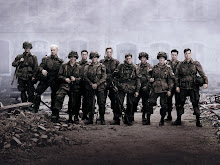A couple wake up and go downstairs to breakfast. They do not realise they are being watched by terrorists. As the couple leave for work the terrorists grab them, throw them in the back of a van and tell them to put on the blindfolds provided. The terrorist hits the girl when she protests and she hits her head and is knocked out, leaving her husband with the terrorist who is holding a gun to his head. They arrive at a house in an unknown location. A stranger passing by hears the girls screams, calls the police and eventually, after coming very close to being killed, the police rescue the man and the woman.
I have used Todorov's narrative pattern with the equilibrium - disruption - equilibrium, Levi-Strauss' theory of binary opposites, the couple as the good and the terrorists as the evil, and Propp's character roles, as the terrorists as the villains, the girl as the damsel in distress and the Police and the husband as the hero.
Why do most stories have a happy ending?
Most stories have a happy ending as it indicates the end of the story, without this the audience would be left wondering what happened and would not feel satisfied with the ending. They are usually happy as we like to believe that everything has a happy ending in real life.
The spooks opening is a standard way of beginning a narrative because it starts with the equilibrium, the normal everyday morning waking up for work, which is suddenly disrupted, by the presence of the terrorists. It also a standard beginning as it is something that the audience can relate to, an everyday morning.
Yes this narrative uses binary opposition with the characters of good and bad, the couple and the terrorists, and also between the norm and the disruption, which can also be seen as the norm being good and the disruption as being bad. The audience are led to pick a side as the empathise with the good characters as the can imagine themselves being in that situation as they see the couple as normal people like them. Another binary opposite could be safety and danger, as terrorists are associated with danger.
Single Drama/film: Margeret
These tend to have Todorov's narrative structure, equilibrium – disruption – equilibrium during every episode/film and would have many binary opposites throughout.
Two nighter: Trial & Retribution
These also have the same narrative pattern of equilibrium – disruption – equilibrium but instead it is spread out over two episodes, usually with a cliffhanger at the end of the first episode to make the audience want to watch the next episode. Most binary opposites would be made clear in the first episode.
Soap: Eastenders
These don't really start with an equilibrium because we are mostly introduced to a character when there is a disruption and the end equilibrium, if there is one as a lot of storylines don't end happily, does not happen till a lot later on, taking weeks to resolve. The binary are always present with more being introduced as different characters join/leave.
Serial: Bleak House
This is similar to soap except that the equilibrium usually comes at the end of the series, or the end of the series could be left on a cliffhanger.
Anthology Series: Skins
This type of series uses the narrative pattern equilibrium – disruption – equilibrium mostly in each episode but also with an underlying storyline across the series which eventually gets resolved in the last episode. The binary opposites are introduced in the first episode but more may be introduced in different episodes.
Long – form Series Drama: Lost
This is the same as an anthology series as there is usually an underlying narrative which carries on throughout the series, also with different narratives in single episodes which can take about two or three episodes to resolve. The binary opposites are introduced as the story unfolds.
Long – Form Series Drama with Some Narrative Experimentation: 24
Again with this form of drama the narrative pattern it spread across the series, with the the disruption being resolved at the end. There are also smaller disruptions throughout the series which can get resolved in an episode or over a few. The binary opposites tend to be introduced at the start.
Sunday, March 8, 2009
Subscribe to:
Posts (Atom)




